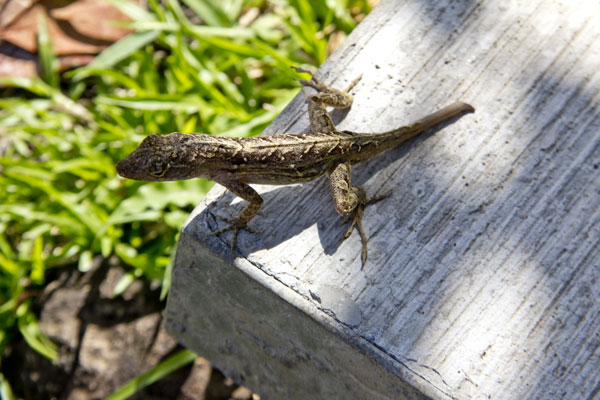Did you ever wonder how some lizards can regenerate their tails after they drop them? Well, so have scientists at Arizona State University who have fo
Did you ever wonder how some lizards can regenerate their tails after they drop them? Well, so have scientists at Arizona State University who have found the “genetic recipe” that enables certain lizards to grow their tails back once they are lost.
Read More
Videography Captures How Green Anole And Flat-tailed House Gecko Fall And Land Feet First
Scientists at the university employed next-generation molecular and computer analysis tools to study the genes that are turned on in the green anole (Anolis carolinensis) when it loses its tail. What the scientists discovered is that when the lizard loses its tail, 326 genes are turned on in specific regions of the tail to regenerate. These genes include genes utilized for embryonic development, would healing and response to hormonal signals.

John Virata
This brown anole's regenerated tail is almost complete.
However, it is not an instant process, the scientists said. For the green anole, it takes up to 60 days to grow back a tail that functions properly. During those two months, the lizard forms what the scientists called a complex regenerating structure with cells that grow into tissues at specific locations along the tail. The scientists have identified a type of cell that is integral for tissue regeneration of the tail, and as with mice and humans, lizards have satellite cells that can be used to grow skeletal muscle and other tissues.
It is hoped that the discoveries will enable scientists to apply what they’ve found into therapeutic approaches to spinal cord injuries, birth defects, and treatment of diseases such as arthritis.
John B. Virata keeps a ball python, two corn snakes, a king snake, and two leopard geckos. His first snake, a California kingsnake, was purchased at the Pet Place in Westminster, CA for $5. Follow him on Twitter @johnvirata


